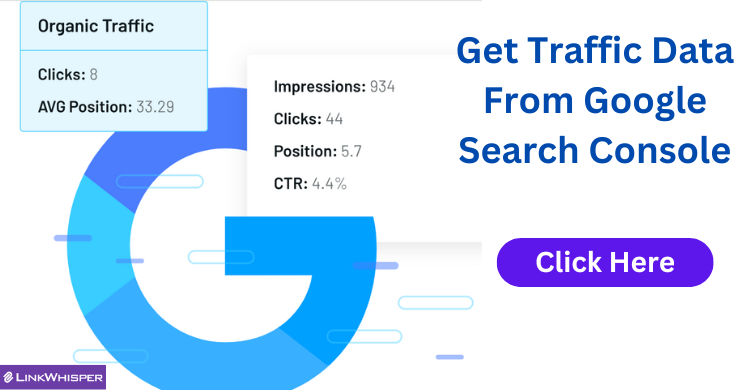Due to the extensive workload involved in launching a business, there is limited opportunity to consider marketing strategies that are both effective and realistic for a startup’s teams to implement.
If you are in this situation, there is no need to worry. You are likely aware of the essential tools that startup marketers use for strategizing, such as a CMS, social media accounts, and graphic design software.
Now, it is important for you to understand how to utilize these tools and similar approaches in order to develop campaigns that are in line with your business objectives. Perhaps you have observed impressive marketing techniques employed by other startups and have pondered how to establish an effective strategy.
Use SMART goals to focus on business-critical goals upfront
An example of a SMART goal could be a goal that is specific, measurable, attainable, relevant, and timely.
- Increase organic traffic to our website by 50% by 2022
- Create 10 new sales focused blogs by Q3
SMART goals are designed to ensure that businesses are positioned for success by offering guidance and facilitating the organization of initiatives.
Start-ups, in particular, can greatly benefit from SMART goals, although they are valuable for any organization.
In many start-ups, employees are required to fulfill multiple roles (typically due to budget limitations or insufficient resources). For instance, the founder may take charge of strategy, product development, and even PR, while the chief technology officer (CTO) might be engaged in website design, marketing, and social media. The workload is simply overwhelming!
Naturally, the main priority for all start-ups is the development of the product (which remains the case until the “release” phase) … however, what about the various additional components that contribute to the company’s continued expansion?
SMART goals can be valuable in this situation. Instead of attempting to accomplish everything simultaneously, prioritize the most crucial goals for your business. Dedicate your full effort to these goals and approach them strategically. Instead of dividing your time among various initiatives, concentrate on three or four that will establish a strong base for your activities or assist your current endeavors.
If you are introducing a new product, concentrate on its development but also establish goals such as:
- Create 10 new blogs to build awareness of the product by X date
- Publish 2 new web pages to promote the new product by X date
- Secure 5 placements in online media using digital PR by X date
By focusing on certain initiatives, rather than spreading your capabilities across multiple ones, you can effectively boost the visibility of your business idea without incurring significant costs. Time is the only resource you need to invest in.
SMART goals enable you to achieve consistency and focus, which are paramount for sustained growth.
Create detailed documents to distinguish who your target buyers are
While SMART goals provide direction and focus for your marketing efforts, it is essential to consider the target audience or individuals you are marketing to.
In order to achieve tangible results from your start-up’s marketing efforts, it is necessary to customize those efforts according to your ideal target audience.
Now that you likely comprehend the individual or organization you desire to engage in business with, have you effectively communicated this information to the rest of your team? Alternatively, have you at minimum prepared a comprehensive document outlining the identities of your target customers?
Buyer personas are useful in this situation. They are fictional portrayals of your ideal customers, created using market research, current data, existing customers, and some educated guesses. By using buyer personas, you can gain insight into the motivations, business obstacles, and requirements of the individuals you want to target in your marketing efforts.
It is crucial to note that buyer personas are not actual individuals, but rather representations of them.
After briefly discussing what buyer personas are, you might be curious about their significance to my start-up. In short, buyer personas enable you to enhance your marketing strategies and categorize your audience(s).
Have clear, compelling messaging
If you are already familiar with the phrase “It does what it says on the tin,” it is likely because you have seen a Ronseal advertisement.
You are responsible for keeping your messages clear and concise in a time when marketing campaigns and buzzwords dominate.
Instead of using platitudes or jargon, people are interested in comprehending the functionality of your product and how it can assist them in overcoming their business difficulties. To be precise, it’s not primarily about your business, but rather how you can provide aid to your potential customers.
Having this in consideration, the messaging produced by your startup (as well as all businesses regardless of their size) must be created keeping the end user in mind. It should be crafted to be uncomplicated, informative, and captivating, in order to aid in the conversion of the website traffic you generate into potential customers.
Word of mouth and great customer service
One of the most crucial methods for a founder to spread awareness about their products or services is through word of mouth. Katja Kaine, the founder of The Novel Company, has prioritized the gradual and natural expansion of her inventive writing technology, thereby establishing a favorable reputation among customers. Katja also places significant emphasis on personally interacting with customers by personally replying to all emails. This practice demonstrates to users that the company genuinely values their feedback, thereby enhancing loyalty.
Connecting with consumers in real life
Nowadays, many brands depend on digital media to advertise their products and services, and Camperguru, created by Vita Valka, is no exception. Camperguru has utilized the algorithms on Facebook and Pinterest to generate curiosity and establish a sense of familiarity with the desired demographic. Nonetheless, what sets this innovative camping app apart is the personal connections formed by its team of ambassadors with campers at the actual campsites. The dedicated campers on Camperguru’s team travel to some of the finest campgrounds in Europe and, in these ideal locations filled with enthusiastic campers, they personally promote the app.
High-quality content and interactivity
Entity, Wolfgang Rückerl’s blockchain startup, relies on content marketing as a significant driver of growth. Emphasizing valuable information, compelling visuals, and comprehensive explanations of the company’s technical aspects, Robert has successfully established a strong user base for his app. Additionally, engagement and interactivity on social media play a crucial role in his marketing strategy, with Entity consistently organizing contests, games, and events for both current and potential users to engage in. Robert attributes this interactive approach to marketing to the enhancement of trust among followers and the subsequent expansion of the platform.
Distribute the content you create
Merely publishing and waiting for customers to appear is insufficient. Content marketing benefits not solely from organic search engine traffic. To maximize its effectiveness, you can reuse the content, share it on platforms other than search engines like social media and email, and promote it to both new and existing audiences.
For instance, if you were to create a blog post with a listicle containing 10 tips, you have the opportunity to make a social media graphic for each tip. This allows you to engage with your audience through an informational series while also promoting the complete article and/or a relevant content offer.
Run ads for short-term results
Content marketing requires a long-term investment and may not produce immediate results. Although it can be highly beneficial in the long run, it is important to have a strategy to generate leads and return on investment in the short-term. Using advertisements is the most effective approach to accomplish this while building your content platform.
Although ads are not as scalable as content marketing because they are “pay to play,” they do offer the advantage of quickly displaying your ads to users once the campaign is activated.
However, determining which ads to prioritize will depend on your ad strategy, although a useful guideline is as follows:
- Google Search Ads – Best when people are already aware of the product/service you sell and search Google to find the right provider/vendor.
- Social Ads – Because people don’t go on social media specifically to shop, these are best when people are not aware of the product/service and you can catch their attention in a fun/visual way. Also good for finding niche audiences.
- Display Ads – Best for brand awareness and re-targeting.







